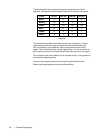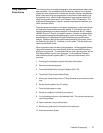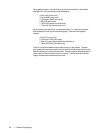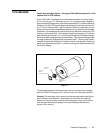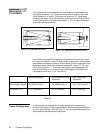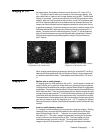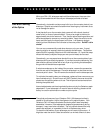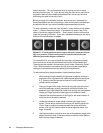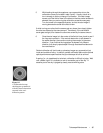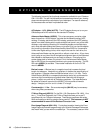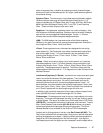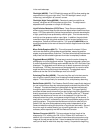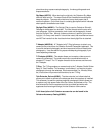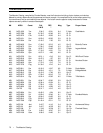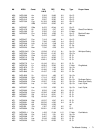
64 • Telescope Maintenance
spheric distortion. Turn your telescope drive on so that you won’t have to
manually track the star. Or, if your are not using the clock drive, use Polaris.
Its position relative to the celestial pole means that it moves very little thus
eliminating the need to manually track it.
Before you begin the collimation process, be sure that your telescope is in
thermal equilibrium with the surroundings. Allow 45 minutes for the telescope
to reach equilibrium if you move it between large temperature extremes.
To verify collimation, view a star near the zenith. Use a medium to high power
ocular — 12mm to 6mm focal length. It is important to center a star in the
center of the field to judge collimation. Slowly cross in and out of focus and
judge the symmetry of the star. If you see a systematic skewing of the star to
one side, then recollimation is needed.
Figure 8-1 -- Even though the star pattern appears the same on both sides of focus,
they are asymmetric. The dark obstruction is skewed off to the left side of the
diffraction pattern indicating poor collimation.
To accomplish this, you need to tighten the secondary collimation screw(s)
that move the star across the field toward the direction of the skewed light.
These screws are located in the secondary mirror holder. Make only a small
1/6 to 1/8 field correction and recenter the star by moving the scope before
making any improvements or before making further adjustments.
To make collimation a simple procedure, follow these easy steps:
1 While looking through a medium to high power eyepiece, de-focus a
bright star until a ring pattern with a dark shadow appears (see figure
8-1). Center the de-focused star and notice in which direction the
central shadow is skewed.
2 Place your finger (or the finger of a friend) along the edge of the front
cell of the telescope, pointing towards the collimation screws. the
shadow of your finger should be visible when looking into the eyepiece.
Rotate your finger around the tube edge until its shadow is seen
closest to the narrowest portion of the rings (ie. the same direction in
which the central shadow is skewed).
3 Locate the collimation screw closest to where your finger is posi-
tioned. This will be the collimation screw you will need to adjust first.
(If your finger is positioned exactly between two of the collimation
screws, then you will need to adjust the screw opposite where your
finger is located).
4 Use the slow motion controls to move the de-focused star image to the
edge of the field of view, in the same direction that the central obstruc-
tion of the star image is skewed.



